EDITORIAL OVERVIEW – ISSUE 34
WORKSHOP: A FRAMEWORK OF LEARNING DESIGN FOR ENGAGING DIGITAL, STEM ASSESSMENTS
Synopsis: When BlinkNow decided it was time to expand the campus of its school in Surkhet, Nepal, it knew that it was a chance to put its principles into practice. The result? A remarkable melding of mission and design–and one of the world’s greenest schools.
In 2015, when BlinkNow decided it was time to expand the campus of its Kopila Valley School, it knew that it was a chance to put its principles into practice.
Not that living its values was a principle new to BlinkNow. The organization was founded in 2008 when a 19 year old backpacker, seeing the poverty that affected children in rural Nepal, realized that she had a responsibility to make a difference. In short order, that young woman, Maggie Doyne, had identified a local team, had her parents wire her life savings of $5,000 to Nepal, and purchased the land that would become the Kopila Valley Children’s Home.
Since then, Maggie, her co-founder Top Malla, and the team at BlinkNow have worked relentlessly to deliver the resources the children of Surkhet required: a school to provide a high-quality education, a health clinic to provide preventative care and basic wellness support, and a women’s center focused on supporting the women who were at the center of struggling communities and families. And they’d done it with their values at the forefront: gender equality, economic empowerment, and environmental sustainability.
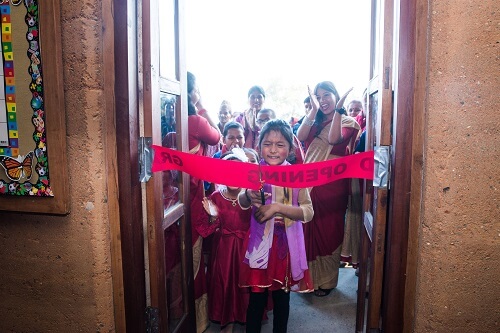
“We knew that building a new school was going to be a huge challenge,” says Doyne. “But we also knew it was a once-in-a-lifetime chance not just to live our values, but to build them in physical form.”
In addition to creating a campus that would preserve the traditional terracing of the earth and match the local Nepali architecture, BlinkNow wanted to show its students, and the world, that even in an under-resourced community, educational establishments could be environmental stewards.
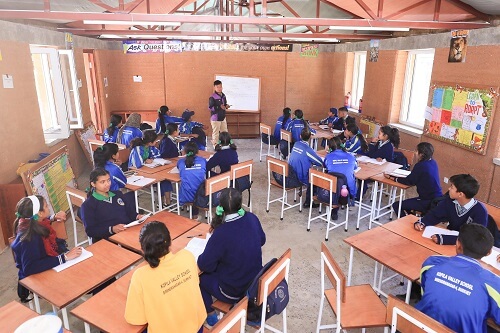
The team reached out to renowned Nepali architect Prabal Thapa and networked to find the right mix of individuals working in the sustainable building community. Over the course of a year they brought on structural engineers, rammed earth specialists, environmental engineers and systems partners. Knowing that even before embarking on such a huge process, the BlinkNow staff had a full time job focused on the work already happening in Kopila Valley, the organization also recruited a small team of Sustainability Fellows specifically to support the execution of the design process.
The results were extraordinary. By focusing on sustainability, BlinkNow was able to build a school that doesn’t simply demonstrate how a building could mitigate its environmental impact, but one that was ideally suited for the teaching and learning that would take place inside its walls every day.
To build the main structure, the team looked beyond traditional concrete walls which have an enormous carbon cost and chose instead rammed earth walls. With the addition of only a small amount of PPC cement, which is available as a byproduct from coal power plants, the walls are protected against the moisture of monsoon season. By reinforcing the walls with steel bars, BlinkNow was able to make the building earthquake resistant–a critical step in a country still reeling from a 2015 quake that killed more than 9,000 people. (60% of schools in the country are still not earthquake resistant, meaning 4.8 million children still attend school in unsafe classrooms.) The walls are also fire resistant and, since they’re 18 inches thick, provide significant noise insulation, which can be helpful in a school of over 400 sometimes noisy children.
But the strength and durability of rammed earth was far from the only benefit. Because of their bulk, the walls maintain warm temperatures in the winter and cool ones in the winter. The design team placed windows and doors strategically to maximize fresh air, and designed terraces on the southern-facing walls to provide shade which prevents the classrooms from overheating in the summer.
Working with Sunfarmer, a non-profit that installs solar energy in hospitals, health clinics, and schools in the developing world, the school generates all of its own electricity, generating about 150 kWh of power a day with a 20 kVA off-grid battery system which powers the campus during the night. By incorporating strategies to reduce energy demand – efficient fans and lights; and passive cooling, the school is actually able to siphon excess electricity onto the grid, helping neighbors keep their lights on with clean power.
“I think other people might have said that by installing the solar electric system, we were doing enough,” says Doyne. “But we knew we could keep pushing.”
After observing a solar cooker at another school in the Kathmandu Valley, the designers working on Kopila Valley School designed a concentrated solar power system that sits on the roof of the cafeteria. This system consists of three rows of curved mirrors that focus sunlight on an insulated pipe containing oil which is heated to very high temperatures, and is then transported down to cooking pots in the kitchen. On an average sunny day, all rice, lentils and vegetables will be cooked using this system–enough for 500 people.
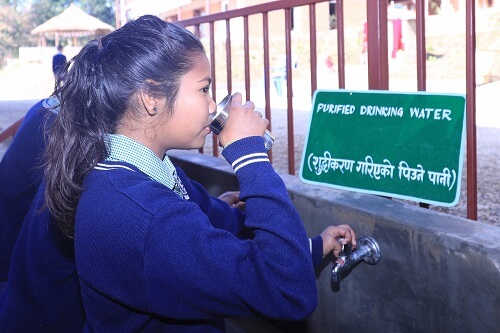
Of course, a school with so many people doesn’t just need power in the form of electricity and heat. It also needs a steady supply of water. The BlinkNow design team realized that while Nepal receives 1.6 meters of annual rainfall, that water wasn’t distributed evenly throughout the year: most comes during the monsoon season from June to August. Working with a local Nepali firm focused on water management, they realized the answer was a carefully designed gutter system that led the rain from the roof of the school through a filtration system and to a 300,000 liter cistern under the cafeteria. The water is later passed through two bio-sand filters that perform both biological and physical filtration, making the water safe for hand washing and dishwashing stations. Water that undergoes yet another screen filtration process is safe enough for drinking.
But even water that goes down the drain isn’t done yet. The school includes constructed wetlands designed to mimic natural wetlands, one of nature’s most effective filters. Water from the sinks and showers, called greywater, passes through two vertical flow wetlands containing sand media, then two bio-sand filters. The process makes it safe for washing floors and flushing toilets.
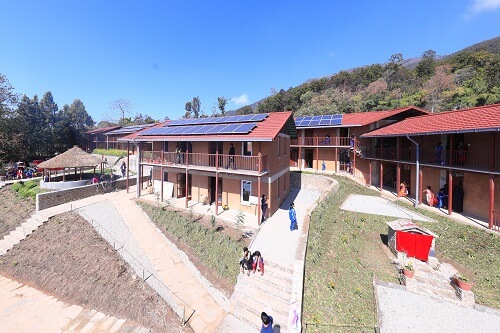
Water from toilets, called blackwater, passes through a separate horizontal flow wetland, which contains stone chip media. This wetland has an aeration system, which improves treatment and reduces smells. Once through this process, the water can be used to irrigate plants–though only non-edible ones. The solids from the blackwater, meanwhile, are directed to a pressurized tank where they’re converted into biogas for cooking.
And while the rainwater that falls on the school itself is enough to supply the needs for drinking, washing and cleaning, the rainwater that falls throughout the rest of the grounds is put to use too, with permeable pavers that allow it to percolate into the soil and replenish groundwater resources rather than flood away into overtaxed rivers and streams. A robust system of roots stabilizes slopes, stores water, increases organic matter in the soil and prevents erosion.
That root structure, in part, supports the trees that were carefully chosen for the site. BlinkNow wanted to maximize the use of outdoor spaces, so they focused on deciduous trees which would provide shade in the region’s hot summer while allowing sunlight to filter through in the winter. The site features more than 100 species of tree, 40 of which produce fruit for students to consume.
We believe strongly that the methods by which this school has been constructed offer a compelling model for other schools looking to grow in responsible ways, and a lesson for all the students at Kopila Valley that environmental sustainability is something that they should take seriously. That principle is reflected throughout the school’s curriculum. Students learn not just how their school operates with care for the environment, but how they interact with the food system by planting some of the rice they consume each year. During the annual Earth Day celebration (which last a full week at Kopila Valley) teachers focus their lessons on the importance of the environment, and select staff members are given the opportunity to participate in “permaculture training” to learn more about Surkhet’s own ecosystem. A cooperative that grew out of the Kopila Valley Women’s Center has even started selling rice bags repurposed into reusable totes to minimize the need for single use plastic bags.
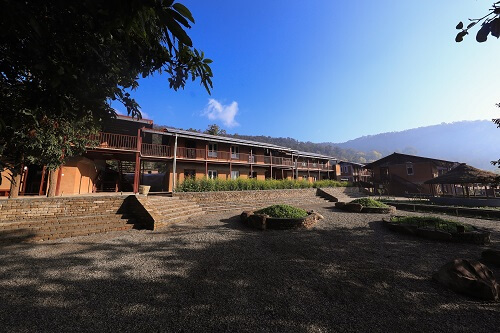
Visit BlinkNow at https://blinknow.org/
Instagram: https://www.instagram.com/blinknoworg/
Twitter: https://twitter.com/blinknow
Facebook: https://www.facebook.com/BlinkNow.org
“Far too often, the world tells those who care about the environment the same thing it tells children born into poverty: that the challenges are too hard. The path is too steep. Better just to leave it alone,” says Doyne. “We’re rejecting that model. At Kopila Valley we know we can do big things.”

